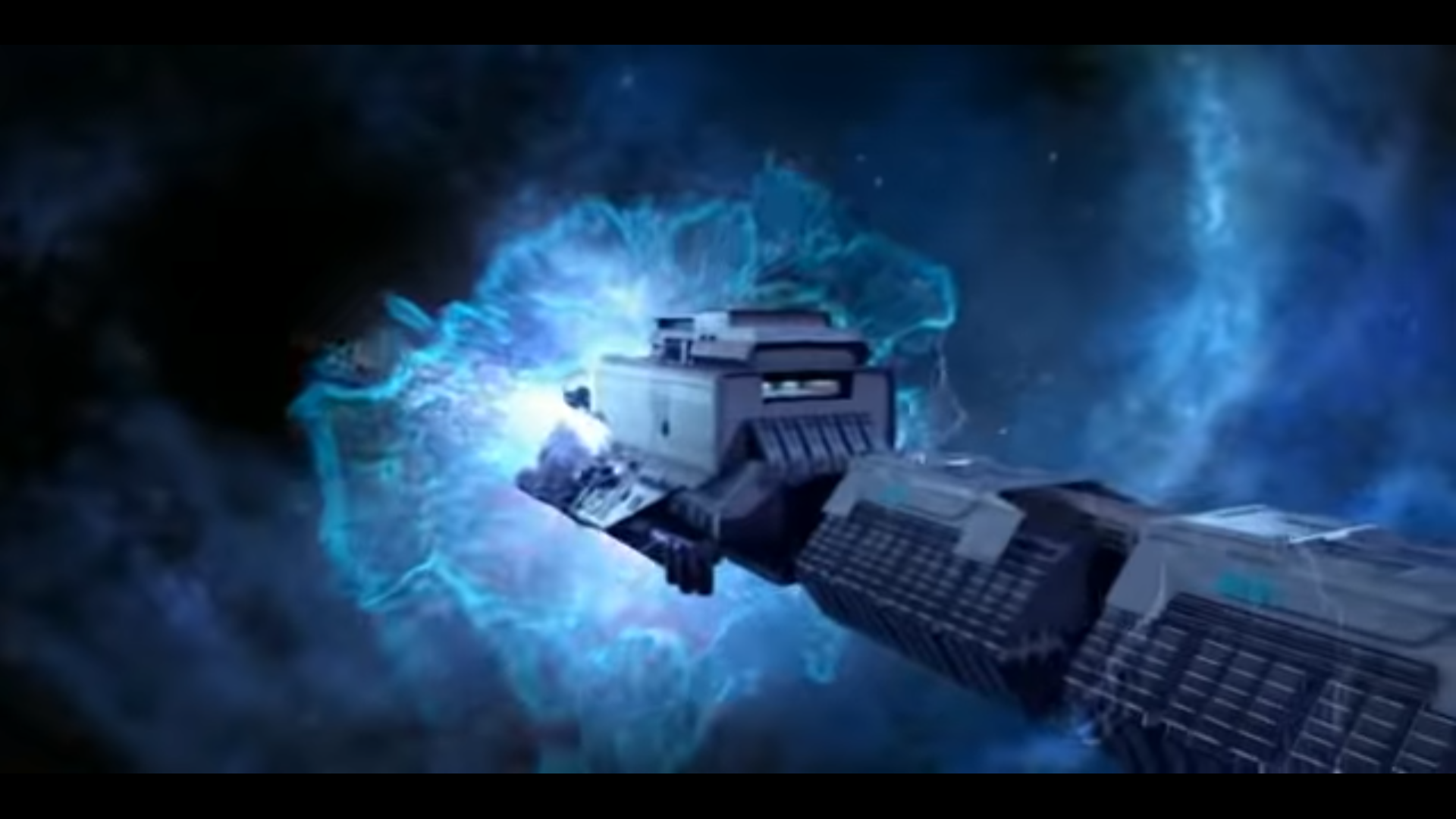As the world healed from its scars of World War Three, other wounds were inflicted to it. In the early 2090s, after decades of mass reconstruction, re-industrialization and resource exploitation, Earth's climate reached a critical state. As natural disasters became more and more frequent and deadly, the rising sea level flooded more and more coastal land, depriving the world of major population centers, trading hubs and mining deposits. It became clear that human intervention would no longer be enough to stop climate change, let alone reverse it. As a result, the most powerful nations of the world, namely the European Federation and the Central Empire, looked for ways to adapt to this changing world.
Both nations looked to the stars, but had very different goals in mind. With Luna and the Council of Mars declaring independence from Earth in 2086, the Central Empire planned an expansionist campaign to conquer these two young nations, rich in nuclear fuel and rare minerals respectively. On the other hand, the European Federation looked for a more peaceful approach of trade agreements to set up a new colony away from the Solar system. Unfortunately, both projects encountered major setbacks, one due to the incredibly fast militarization of space and the other due to a lack of resources.
The idea behind the Odyssey Initiative dates back to 2074, when the European Space Agency tasked a small research team to investigate the technical feasibility of an extra-solar colonization program. This team was mostly made of researchers and engineers who laid the foundations of the Initiative with the limited funding they had available. After a major flooding devastated the Netherlands, Europe's focus on climate change drastically turned from building expensive and ultimately ineffective flood barriers to an evacuation plan to redistribute its population. The Odyssey Initiative was officially founded in 2093, some twenty years after the initial plans were drafted, and tasked with sending waves of colonists to the nearest habitable system, Alpha Centauri.
While the construction of the Initiative's launch sites and the development of its launch vehicles went relatively well, the construction of the colony ship itself proved to be a much larger challenge than previously anticipated. The initial plans relied on conventional fission gas nuclear propulsion to send the ship on a 50 years long voyage, but the discovery of the Dawson-Sirenko-Mayer drive changed everything. The ship's blueprints had to be redrawn from scratch to integrate the new technology, replacing the massive engines and fuel tanks for more storage and passengers, but now needing an immensely powerful energy source. As a result, the Initiative received the permission to look for external sub-contractors and investors, at first among the European Federation's allies, and later all over the world.
At first, the Initiative struggled to find suppliers, sub-contractors and investors abroad, as few believed the program to be achievable. Despite Europe's monetary guarantees, only a handful of corporations were willing to participate. In the meantime, the Empire's initial plans for aggressive expansion were met with unexpected consequences. Due to Mars and Luna's lower gravity and readily available materials, the construction of their fleets far outpaced those of the Chinese, and any though of a quick and decisive invasion was quickly snuffed out in the eyes of the Empire's top strategists. As a result, when the European government eventually asked for help for the Odyssey Initiative, the Empire shocked the world by abandoning its own program and joining the Initiative. Now with the two most powerful nations on Earth working together, corporations and governments alike rushed to seize any influence they could on the Initiative in exchange for manpower, resources, funding and technology.
With most of Earth now backing the Initiative, the development and construction of the first colony ship, the Ulysses, resumed at a unprecedented pace. New technologies were developed, and even Luna and Mars provided materials and technologies through civilian suppliers. Instead of a gas fission reactor, the Ulysses was outfitted with a unique fusion reactor capable of in-flight refueling, serving as a test-bed for the technology and allowing the ship to carry more cargo instead of enormous amounts of fuel. Finally, stasis pods were installed to reduce the need for supplies during the journey, even if the new estimations were only a decade of transit to reach Alpha Centauri. In 2147, some 54 years after its humble beginnings, the Initiative was finally ready to launch its first vessel.
The launch of the Ulysses in early 2147 was a historical moment, a testament to what mankind could achieve through cooperation rather than opposition. The ship subsequently underwent two years of trials to test and fine-tune many of the experimental technologies installed on-board. In the meantime, the Initiative launched the construction of another colony ship, the Ctimene, though the influx of raw materials and funding slowed down significantly to allow the participating countries to recover from their investments. This allowed the rest of the world to adjust their focus to other matters, such as the now heavily militarized Council of Mars and its growing threat to Earth. This proved to be a turning point in human history, as the Ulysses was commissioned and cleared for its mission mere days before the Council of Mars launched a pre-emptive attack on Earth's military orbital shipyards.
In a desperate bid to escape their pursuers, the Ulysses proceeded into the singularity, purging its reactor to avoid a catastrophic meltdown. The ship emerged into the void of deep space, powerless, but safe. As the ship's engineers rushed to restore power across the ship, the navigation crew struggled to find their bearings. With the singularity generated early and through a power spike, there was no way to estimate the target location, unlike the numerous tests and simulations done in their trials. Growing more desperate to return home, the ship's crew spent the following weeks trying to find a solution, but the ship was simply too far away from any recognizable constellation to determine its position. While the repairs were eventually completed, restoring the full capabilities of the ship's reactor, there was simply no way of returning home. With the crew's limited supplies diminishing every day, the ship's captain made a difficult decision: to surrender control of the ship to the onboard AI assistant, enhancing it with the ship's vast computing capabilities to create an immortal peer that would guide the ship towards the nearest inhabitable planet.






Comments